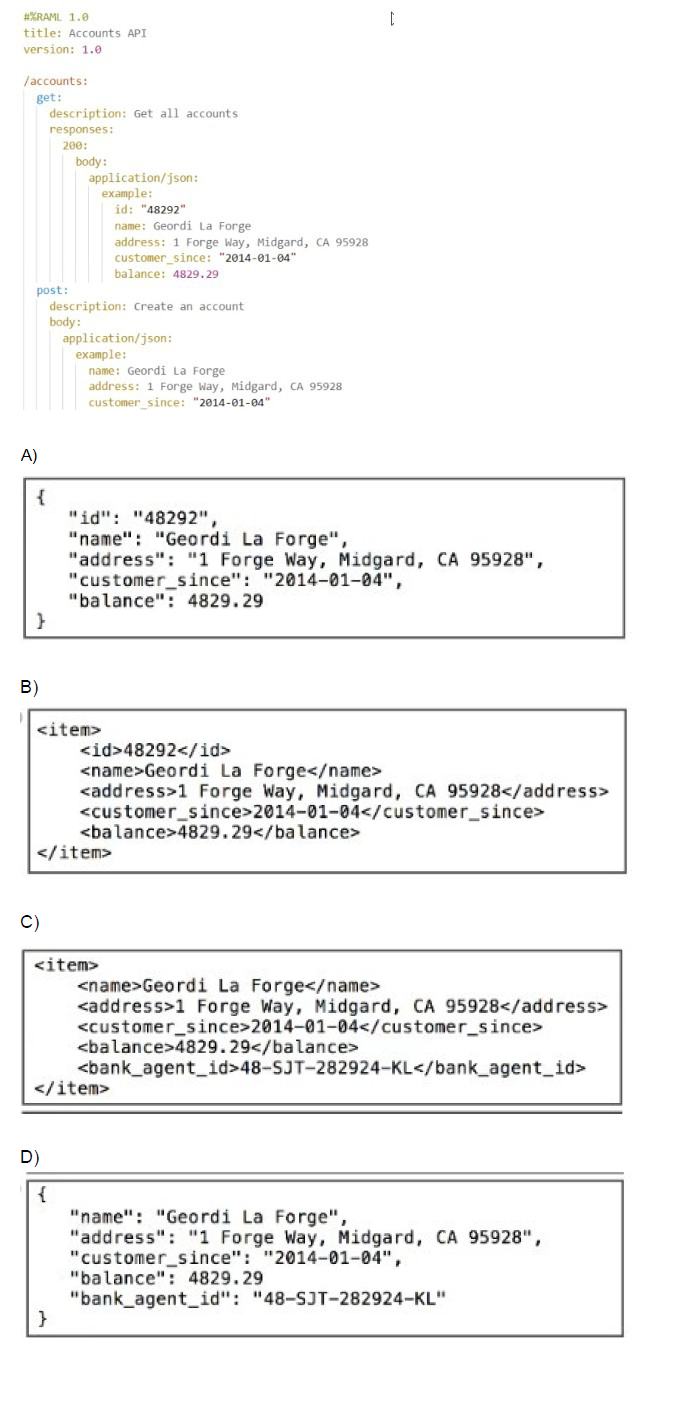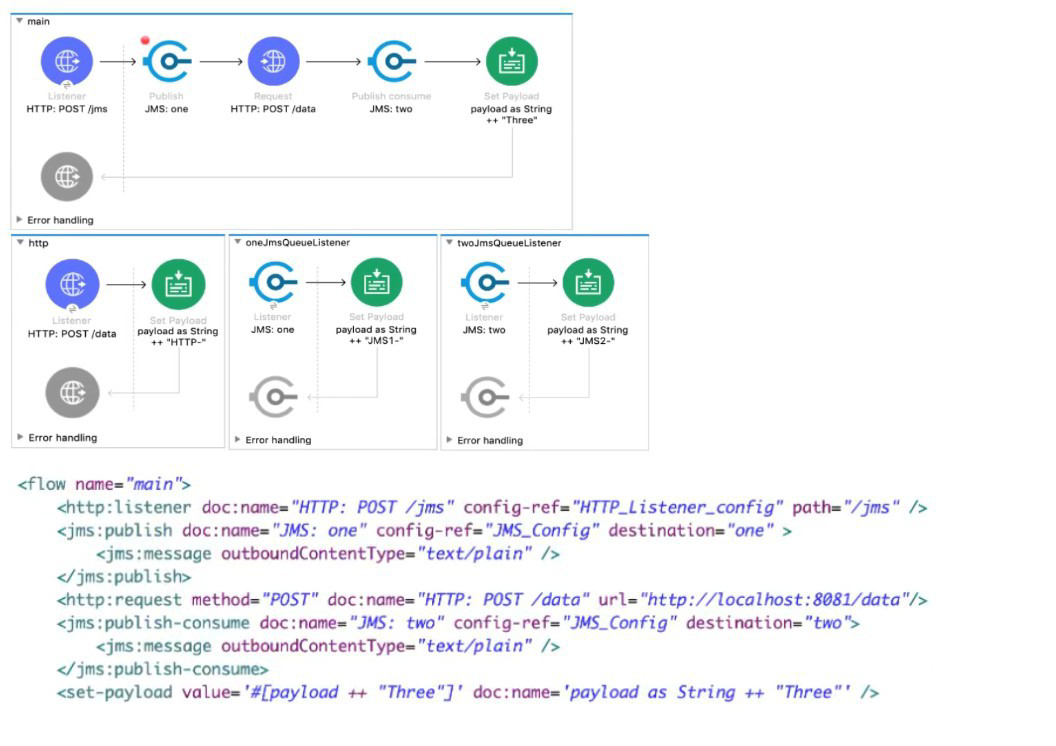
- Email support@dumps4free.com

Refer to the exhibit.

What is the output payload in the On Complete phase
A. summary statistics with NO record data
B. The records processed by the last batch step: [StepTwol, StepTwo2, StepTwo3]
C. The records processed by all batch steps: [StepTwostepOnel, stepTwostepOne2, StepTwoStepOne3]
D. The original payload: [1,2,31
Explanation: This is a trcik question. On complete phase pyalod consists of summary of records processed which gives insight on which records failed or passed. Hence option 4 is correct answer.
Refer to the exhibit.

What data is expected by the POST /accounts endpoint?
A. Option A
B. Option B
C. Option C
D. Option D
What is the difference between a subflow and a sync flow?
A. No difference
B. Subflow has no error handling of its own and sync flow does
C. Sync flow has no error handling of its own and subflow does
D. Subflow is synchronous and sync flow is asynchronous
Explanation:
Correct answer is Subflow has no error handling implementation where as sync flow has. Subflow
A subflow processes messages synchronously (relative to the flow that triggered its execution) and always inherits both the processing strategy and exception strategy employed by the triggering flow. While a subflow is running, processing on the triggering flow pauses, then resumes only after the subflow completes its processing and hands the message back to the triggering flow. Synchronous Flow
A synchronous flow, like a subflow, processes messages synchronously (relative to the flow that triggered its execution). While a synchronous flow is running, processing on the triggering flow pauses, then resumes only after the synchronous flow completes its processing and hands the message back to the triggering flow. However, unlike a subflow, this type of flow does not inherit processing or exception strategies from the triggering flow. This type of flow processes messages along a single thread, which is ideally suited to transactional processing
Refer to the exhibits.

A web client sends a POST request to the HTTP Listener with the payload "Hello-". What response is returned to the web client?
What response is returned to the web client?
A. Hello- HTTP-] MS2-Three
B. HTTP-JMS2-Three
C. Helb-JMS1-HTTP-JMS2 -Three
D. Hello-HTTP-Three
A Batch Job scope has five batch steps. An event processor throws an error in the second batch step because the input data is incomplete. What is the default behavior of the batch job after the error is thrown?
A. All processing of the batch job stops.
B. Event processing continues to the next batch step.
C. Error is ignored
D. Batch is retried
Explanation:
In case of an error , batch job completes in flight steps and stops further processing. MuleSoft Doc Ref : Handling Errors During Batch Job | MuleSoft Documentation The default is all processing will stop but we can change it by Max Failed Record field. General -> Max Failed Records: Mule has three options for handling a record-level error: Finish processing, Continue processing and Continue processing until the batch job accumulates a maximum number of failed records. This behavior can be controlled by Max Failed Records.
The default value is Zero which corresponds to Finish processing. The value -1, corresponds to Continue processing.
The value +ve integer, corresponds to Continue processing until the batch job accumulates a maximum number of failed records
| Page 7 out of 47 Pages |
| Previous |